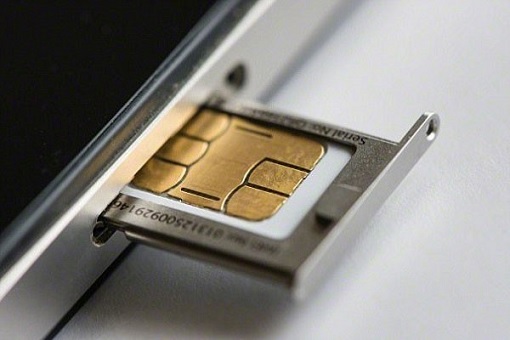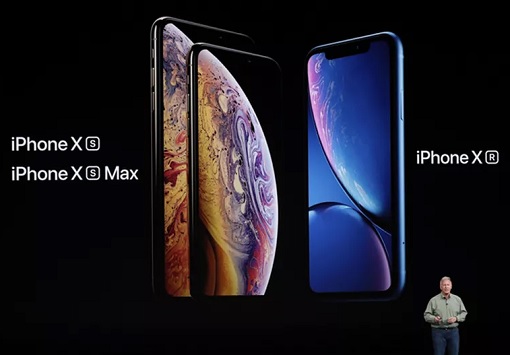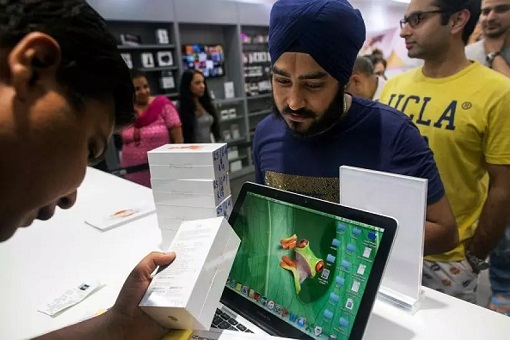Apple fans have a new reason to celebrate after the world’s first trillion-dollar company unleashed not one, not two but three new iPhones. The new iPhone XR, XS and XS Max will all have dual SIM capabilities. This means that a user will be able to have two separate phone lines. One will be via a traditional physical SIM card and the other will be an eSIM or embedded SIM.
But dual SIM capabilities are so yesterday. Android phones have been armed with such a weapon ages ago. However, Apple’s latest SIM – the “eSim” – is not like ordinary SIM. An eSIM is a digital SIM that allows you to activate a cellular plan from your carrier without having to use a physical nano-SIM. Yes, iPhone users can throw away their ejector pins and paper clips.
The eSim, however, is available on XS and XS Max model. And such capabilities will come with an update to iOS 12 later this year. The tiny, reprogrammable SIM card – at just 6 millimetres by 5 millimetres – is soldered onto the iPhone’s motherboard directly. It’s worth to note that to use two different carriers, your iPhone must be unlocked. Otherwise, both plans must be from the same carrier.

China, being a special market, will have a special edition that contains a SIM tray which holds two physical cards. Anyway, for the time being, there’re only 10 countries that offer eSIM support – Austria, Canada, Croatia, the Czech Republic, Germany, Hungary, India, Spain, United Kingdom, and United States. So, what’s the big deal with this so-called eSim technology anyway?
The technology will, at least theoretically, allow a user to change carriers without having to order a new SIM card or go to a shop. Instead, they could just sign up digitally. Obviously a frequent traveller will tell you how useful this functionality is if you’re travelling abroad and want a temporary local number. It’s also useful if you want to have your work and personal numbers on the same device.
It appears Apple isn’t targeting saturated market like the U.S., UK or developed countries but rather emerging markets such as India, Philippines or even China with the introduction of dual SIM capabilities. Developing markets have been using dual SIMs to avoid roaming fees, easily swap of carriers, and enjoy other benefits of having two lines active at once.

More importantly, the eSIM option could open new business models for Apple. Neil Shah, research director at Counterpoint Research, said – “The eSIM will be controlled by Apple and it can dictate which carriers to partner with, support and show relative mobile plans. So Apple can be the gatekeeper now since it will have control over eSIM. Thus it will demand a revenue cut for the activations happening through eSIM.”
Apple could also offer its own tariffs and charge a “premium for the convenience and ease of activating a new plan.” Even if carriers refuse to be intimidated by Apple’s demand for a cut in their profits, they still have a reason to worry – the eSim capabilities allow users to switch providers quickly, therefore, heating up competition in an already tough market for many operators.
Earlier this year, the US Department of Justice began investigating AT&T, Verizon, and mobile industry group GSMA for possible collusion to keep users from switching devices with eSIM support. With eSIM support now on iPhones, users may start seeing carriers battle over who can slash prices more, much like when Verizon reintroduced an unlimited data plan.

While global support for eSIM may be small now, a surge in eSIM devices could force carriers to accelerate adoption, especially if Apple’s ultimate plan is to get rid of the physical SIM entirely. When that happens, it will be difficult for carriers to ignore Apple’s demands. The trillion-dollar company is making business tougher for mobile carriers while making it easier for users.
In India, Airtel and Reliance Jio already offered support for eSIMs at the time when Apple Watch Series 3 Cellular made its way to the country. In the U.S., AT&T, T-Mobile and Verizon are all signed up. In China, China Telecom and China Mobile have introduced eSIM support in a couple of cities but not Beijing. For obvious reason, the Chinese will not allow Apple to control local carriers.
Other Articles That May Interest You …
- National Security Threat – China’s Huawei & ZTE “5G Technology” Banned In Australia
- Jack Ma’s Financial Ant Has Become Too Big – Chinese Banks & Government Aren’t Impressed
- BOOM!! Investors Caught With Pants Down As Facebook Plunges 20%, Zuckerberg Lost $16.8 Billion
- Apple’s $350 Billion Investment Plan Proves Trump Is A Business Genius
- Crackdown Continues – Apple Kowtows & Removes Skype Upon China’s Order
- Top-8 Ways To Access Blocked Websites On Windows, MAC, Android & Apple iOS Devices
- Apple To Pay $14.5 Billion – EU Has Begun Slaughtering American Cash Cow

|
|
September 17th, 2018 by financetwitter
|


|

|

|

|

|

|




























Comments
Add your comment now.
Leave a Reply